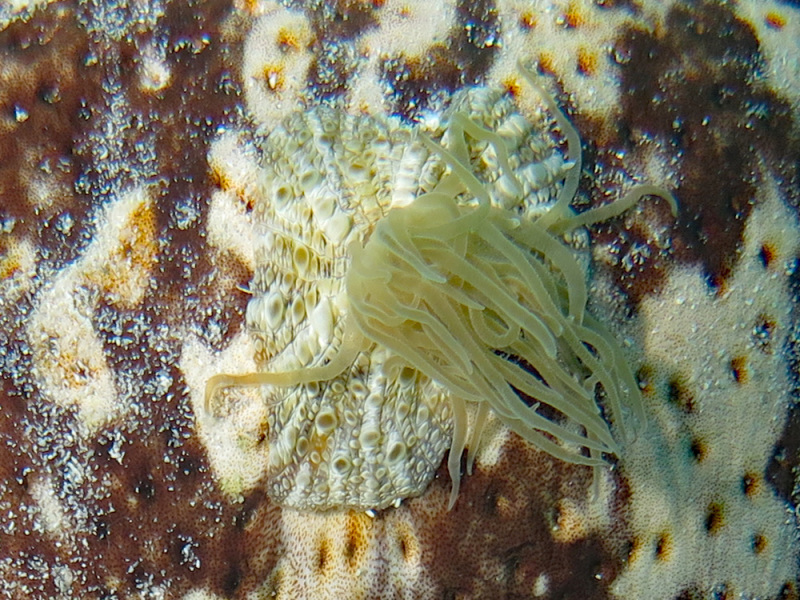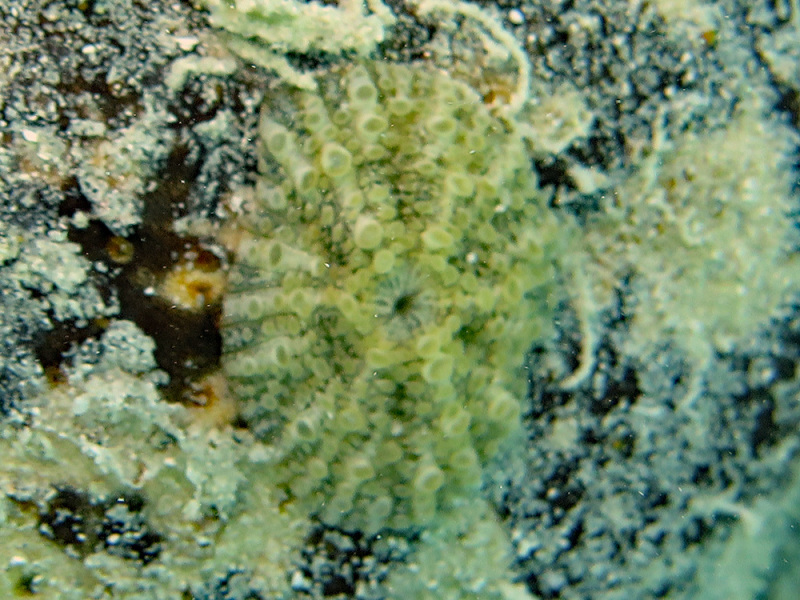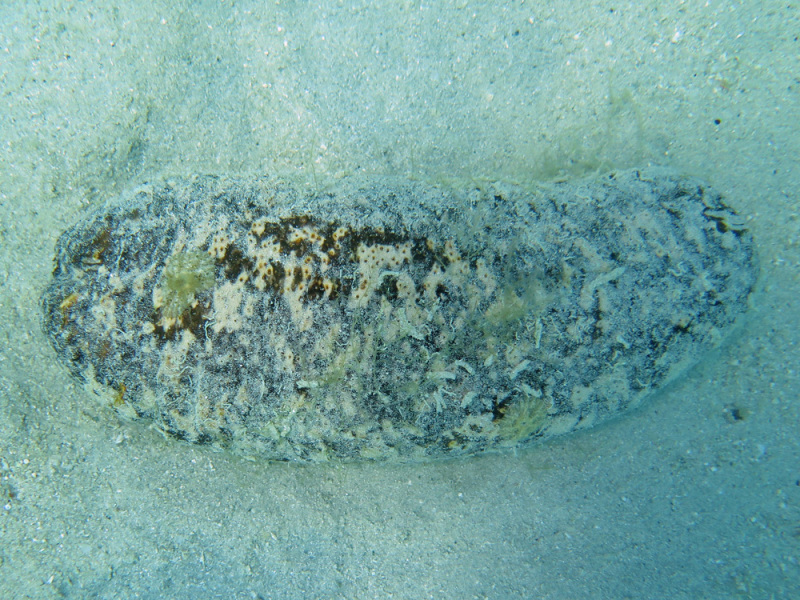
©Anne Hoggett: One of two individuals of Bunodeopsis sp. about 3 cm diameter on the dorsal surface of holothurian Holothuria (Microthele) sp. at Watson's Bay, Lizard Island. Tentacles were extended as shown here when the animal was disturbed.

©Anne Hoggett: One of two individuals of Bunodeopsis sp. about 3 cm diameter on the dorsal surface of holothurian Holothuria (Microthele) sp. at Watson's Bay, Lizard Island. Tentacles were retracted as shown here when found.

©Anne Hoggett: Enlarge the photo to see two specimens of Bunodeopsis sp. as found on Holothuria (Microthele) sp. in shallow water near the beach at Watson's Bay, Lizard Island.
Colours
Distinguishing features
A small, flat anemone with a radial pattern of bumps on the column and retractile tentacles. The only known specimens from Lizard Island were found loosely attached to the dorsal surface of a holothurian, Holothuria (Microthele) sp..
Size
- Up to 3 cm (Approximate longest diameter of the two observed individuals.)
Synonyms
Comments
The anemones were loosely attached to the holothurian. One fell off when sand was brushed gently from the holothurian's surface.
by Anne Hoggett
Dr Andrea Crowther (SA Museum) thinks the anemone looks like Bunodeopsis in the family Boloceroididae. Bunodeopsis australis was described from Torres Strait in 1898 and does not appear to have been noticed much since (no recent records in Atlas of Living Australia accessed 7 Aug 2017). Neither Andrea nor Anne Hoggett (LIRS) are aware of any other reports of an association between an anemone and a holothurian.
by Anne Hoggett
Joe Rowlett (Field Museum, Chicago) agreed in Jan 2020 that this is Bunodeopsis, and noted that they are usually found on seaweeds.
by Anne Hoggett